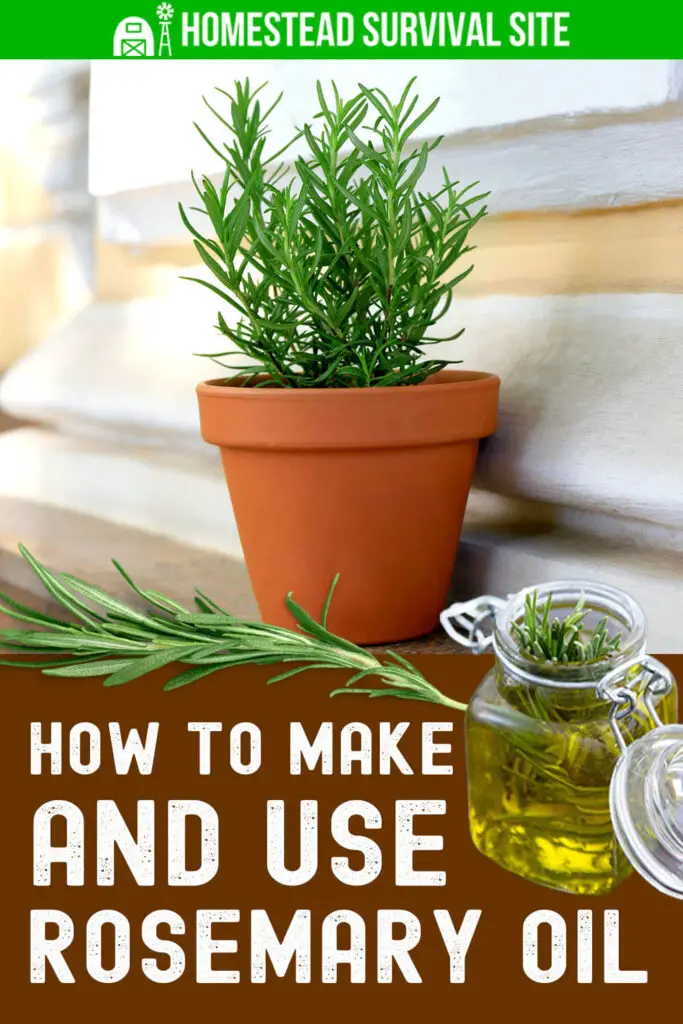Estimated reading time: 10 minutes
Rosemary oil is a highly versatile essential oil derived from the rosemary plant, a popular herb known for its aromatic and medicinal properties. This oil has a pleasant, refreshing aroma, making it a favorite in aromatherapy to uplift mood and relieve stress, among other things.
In this article, you will learn the step-by-step process of making your own rosemary oil at home and discover the various ways you can incorporate it into your daily routine.
Want to save this post for later? Click Here to Pin It On Pinterest!
Gathering Ingredients and Tools
The quality of ingredients plays an important role in the potency and effectiveness of your homemade rosemary oil. Using organic, high-quality rosemary, whether wild-grown or sourced from your own garden, ensures that the oil will be free of pesticides and other chemicals, providing you with a pure, health-promoting product.
Ingredients
- 1 cup of high-quality, organic rosemary leaves (freshly picked, if possible)
- 1 cup of carrier oil (such as olive oil, coconut oil, or jojoba oil)
- 1 sterilized glass jar with a tight lid (able to hold at least 3 cups of liquid)
- Cheesecloth or strainer for filtering
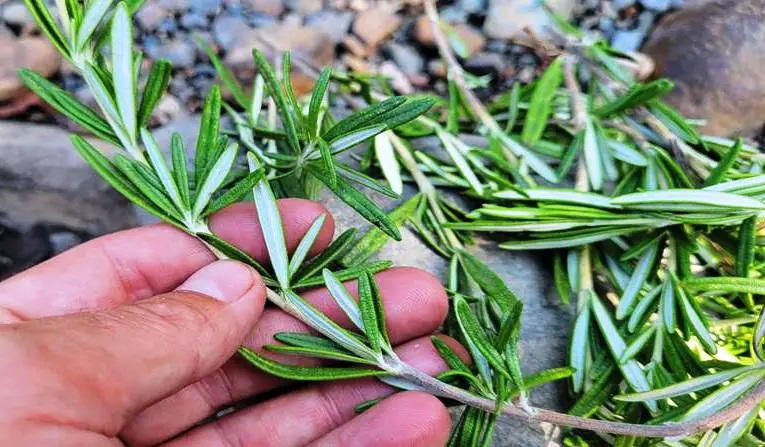
This recipe yields approximately one cup of rosemary oil. The quantity can be easily adjusted according to your needs. If you require more oil, simply increase the ratio of ingredients while maintaining the same proportions.
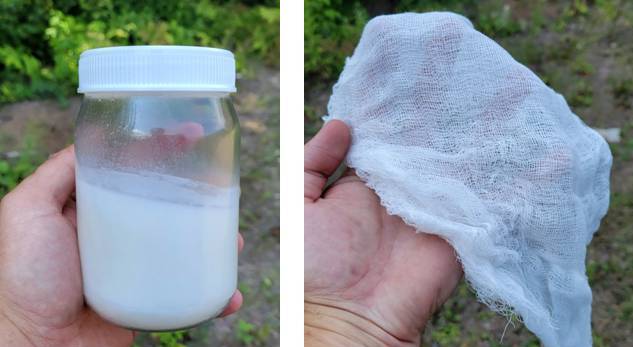
For example, to double the output to 2 cups of oil, use 2 cups of rosemary leaves and 2 cups of carrier oil.
For smaller quantities, reduce the ingredients proportionately. If you find the potency to be undesirable then you can always add or remove rosemary from the recipe.
Tools Needed
- A glass jar with a tight lid for infusing the oil and rosemary
- Measuring cup
- A double boiler for heating the carrier oil and rosemary
- A spoon for stirring
The double boiler is used to gently heat delicate ingredients that might otherwise burn or separate if directly exposed to intense heat.
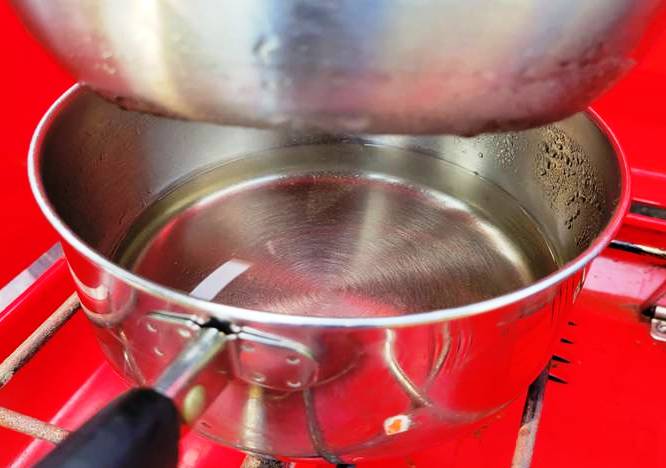
If you don't have a double boiler, worry not – you can use a simple saucepan with a heat-resistant bowl placed on top, ensuring it fits snugly and doesn't touch the water inside the saucepan.
Making the Rosemary Oil
For this recipe, we will be using coconut oil but there are a myriad of options to choose from. Just be sure that the carrier oil is high-quality for the best results.
- Washing the Rosemary: Begin by thoroughly washing your rosemary to remove any dirt or debris. Run the leaves under cold water and gently rub them with your fingers to ensure they're clean.

- Drying the Rosemary: Pat the rosemary leaves dry using a clean towel. It's crucial to remove as much moisture as you can to avoid any water getting into the oil during the infusion process, which could lead to spoilage.
- Stripping the Leaves: Hold onto the top of the stem with one hand, then run the fingers of your other hand down the stem to strip off the leaves. Repeat this process with all the sprigs until you have a cup of rosemary leaves.
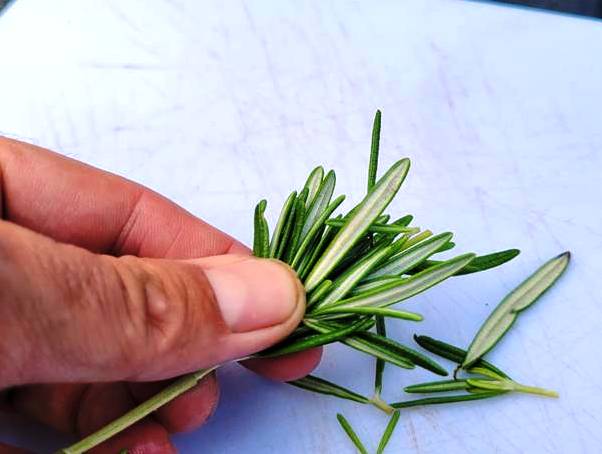
- Chopping the Leaves (optional): Though not necessary, you can choose to chop the leaves into smaller pieces. This may help release more of the rosemary's oils during the steeping process.
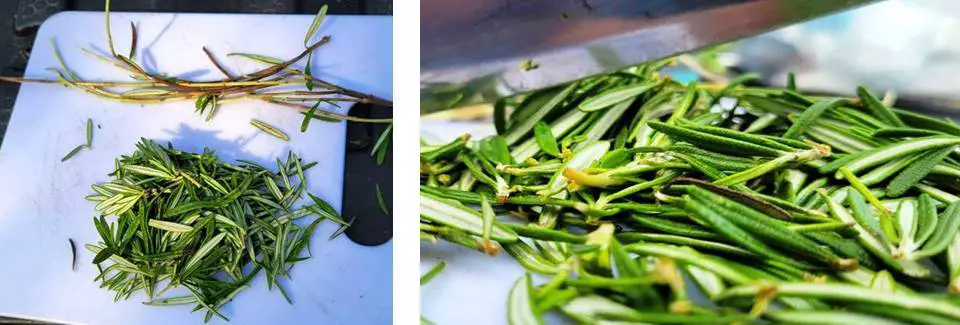
- Steeping in Coconut Oil: Place the fresh rosemary leaves and coconut oil in the top part of a double boiler. Heat the water in the bottom part of the double boiler and bring it to a gentle simmer. Allow the rosemary leaves to steep in the coconut oil for 5-10 minutes, stirring occasionally.

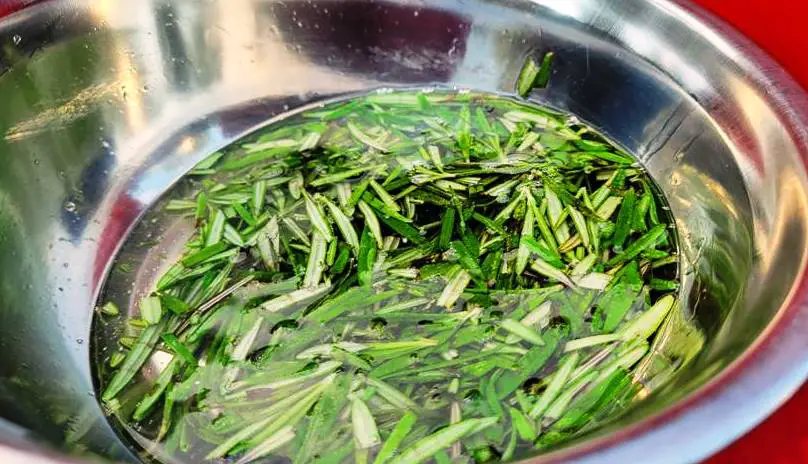
- Straining into a Clean Mason Jar: Set up a cheesecloth over a clean mason jar. Pour the mixture of rosemary-infused coconut oil through the cheesecloth into the mason jar. Use a spoon or spatula to press down on the rosemary leaves to extract any remaining oil. Discard the used rosemary leaves.

Useful Tips for Making Rosemary Oil
While the recipe for rosemary-infused oil may seem straightforward, there are ways you can greatly enhance the quality of your final product.
A few simple tweaks can intensify the flavor and ensure a smoother infusion process.
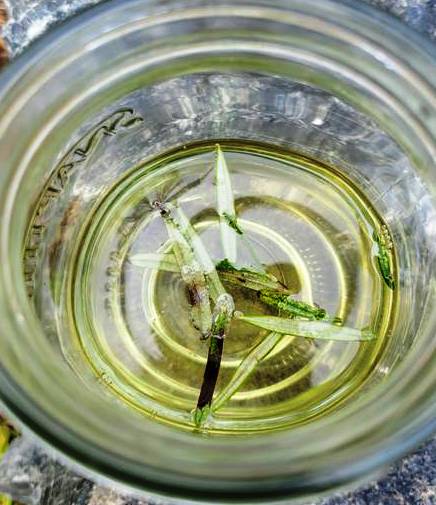
To help you make the most of this aromatic concoction, here are some handy tips and tricks.
- Experiment with Steeping Times: Though a typical steeping time for rosemary oil is between 5-10 minutes, don't hesitate to test out different durations to find your preferred potency. Steeping for a shorter period may yield a subtler, lighter aroma, while longer steeping times can intensify the fragrance and flavor of the oil. Remember, the goal is to create an oil that caters to your personal preferences.

- Plan the Timing: While you can make rosemary oil year-round, it's worth noting that the best time to harvest rosemary is in the morning after the dew has dried but before the sun gets too hot. This is when the plant's oils are most concentrated, leading to a more potent infusion.
- Incorporate Additional Herbs: For a more complex and beneficial blend, consider adding other herbs to your rosemary infusion. Lavender or peppermint can add a soothing, calming effect, while herbs like thyme or oregano can intensify the aromatic profile.
Basil, with its sweet and slightly peppery flavor, resembles rosemary to some extent and can be a fantastic alternative for infusing oil. Incorporating basil not only brings a fresh, unique aroma but also contributes to the overall health benefits, given its potent anti-inflammatory and antioxidant properties.
The Various Uses for Rosemary Oil
Rosemary oil is a versatile ingredient that should be in every kitchen and medicine cabinet. It has many uses in cooking and medicine. It adds a unique smell and taste to dishes and has health benefits too.
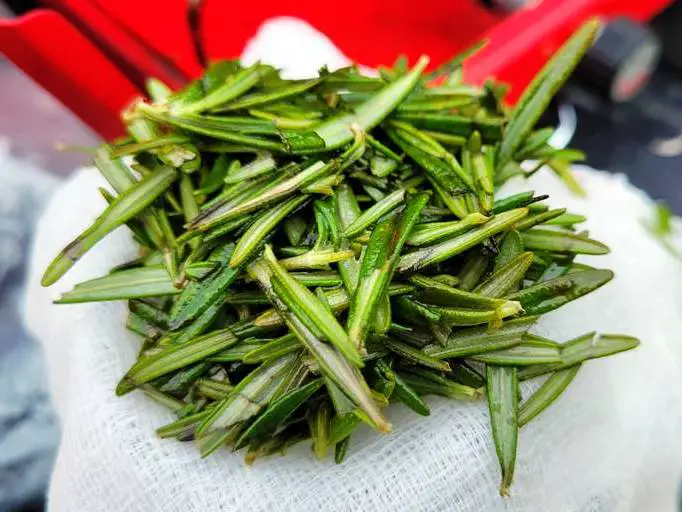
People have used it for a long time in traditional and natural medicine. You can use it to make your roast taste better or to soothe sore muscles. Rosemary oil has many uses outside the kitchen that can benefit our daily lives.
Aromatherapy and Relaxation
Rosemary oil is widely recognized for its calming and stress-relieving properties. When diffused or inhaled, its soothing aroma can significantly alleviate anxiety and promote mental clarity.
In addition, adding a few drops to your bath can result in a relaxing, spa-like experience, offering relief from stress and tension after a long day.
Scalp and Hair Benefits
Rosemary oil can work wonders for scalp health and hair growth. Due to its stimulating properties, a gentle massage with rosemary oil can increase blood circulation to the scalp, which promotes hair growth.
You can also create a DIY hair mask by mixing rosemary oil with a carrier oil, like coconut or olive oil, or even incorporate a few drops into your shampoo and conditioner for a daily nourishing treatment.
Culinary Uses
Rosemary oil, with its unique and strong flavor, can greatly enhance the taste of various dishes when used carefully. Adding a few drops to dressings or marinades deepens the flavor, bringing a complexity to salads and grilled meats.
Similarly, lightly drizzling it on roasted vegetables or combining it with other infused cooking oils can elevate regular recipes to gourmet standards by introducing the distinct herbaceous and slightly minty note that is characteristic of rosemary.

Skin and Body Care
Rosemary oil is also revered for its potential skincare benefits, particularly due to its antioxidant and anti-inflammatory properties. This study suggests that rosemary oil exhibits potent antioxidant activities, which can help combat premature skin aging and inflammation.
To incorporate rosemary oil into your skincare routine, consider creating a homemade cream or lotion. Simply add a few drops of rosemary oil to a mild carrier oil such as jojoba or almond oil, along with melted shea or cocoa butter. This mixture, when applied topically, can help to hydrate and rejuvenate your skin while reducing redness and blemishes.
Additionally, its anti-inflammatory properties make rosemary oil an efficacious remedy for muscle soreness and tension. For soothing massage oil, combine a few drops of rosemary oil with a carrier oil and gently rub it into the affected areas. This can help to alleviate discomfort and promote relaxation.
However, it's crucial to remember that essential oils are potent, and a patch test on a small skin area is recommended before any widespread application.

A Simple Recipe for a Complex Flavor
Rosemary-infused oil is truly a versatile and valuable addition to any home. Its culinary uses extend beyond a simple condiment, transforming ordinary dishes into gourmet delights, while in skincare, it acts as a potent antioxidant and anti-inflammatory agent.
The beauty of rosemary oil lies in its simplicity; creating homemade lotions or massage oils is a straightforward process that anyone can incorporate into their routine. Plus, having a rosemary plant in your indoor garden ensures a year-round supply of this aromatic herb.
Like this post? Don't Forget to Pin It On Pinterest!

Rosemary Oil
Equipment
- 1 glass jar with a tight lid for infusing the oil and rosemary used for the first step of the process before using a second jar for storage
- 1 Measuring cup
- 1 double boiler
- cheesecloth or strainer for filtering
Ingredients
- 1 cup high-quality, fresh organic rosemary leaves (fresh picked if possible)
- 1 cup carrier oil This could be olive oil, coconut oil or jojoba oil.
- 1 sterilized glass jar with lid to store the finished oil
Instructions
- Washing the Rosemary: Begin by thoroughly washing your rosemary to remove any dirt or debris. Run the leaves under cold water and gently rub them with your fingers to ensure they're clean.
- Drying the Rosemary: Pat the rosemary leaves dry using a clean towel. It's crucial to remove as much moisture as you can to avoid any water getting into the oil during the infusion process, which could lead to spoilage.
- Stripping the Leaves: Hold onto the top of the stem with one hand, then run the fingers of your other hand down the stem to strip off the leaves. Repeat this process with all the sprigs until you have a cup of rosemary leaves.
- Chopping the Leaves (optional): Though not necessary, you can choose to chop the leaves into smaller pieces. This may help release more of the rosemary's oils during the steeping process.
- Steeping in Oil: Place the fresh rosemary leaves and oil in the top part of a double boiler. Heat the water in the bottom part of the double boiler and bring it to a gentle simmer. Allow the rosemary leaves to steep in the oil for 5-10 minutes, stirring occasionally.
- Straining into a Clean Mason Jar: Set up a cheesecloth over a clean mason jar. Pour the mixture of rosemary-infused coconut oil through the cheesecloth into the mason jar. Use a spoon or spatula to press down on the rosemary leaves to extract any remaining oil. Discard the used rosemary leaves.
You May Also Like:


